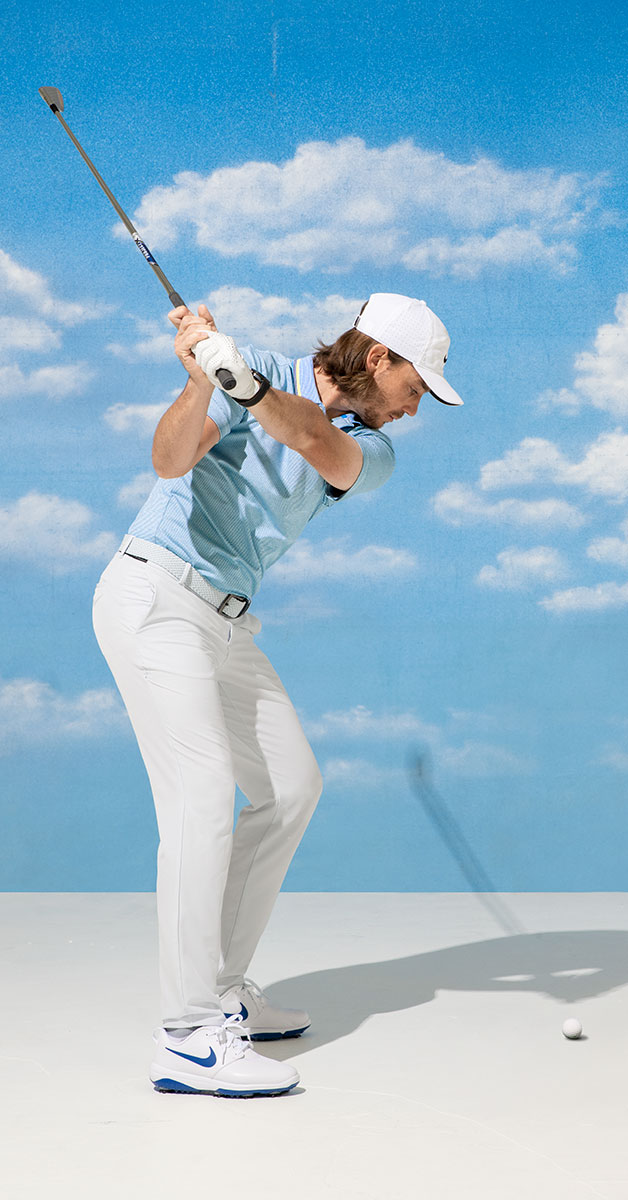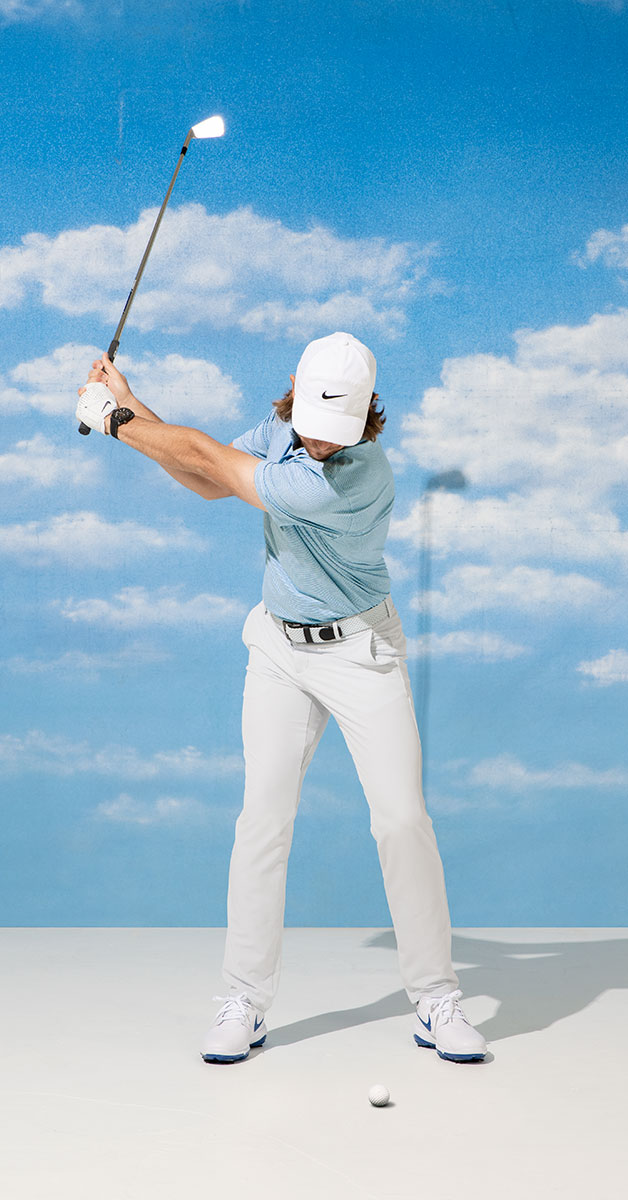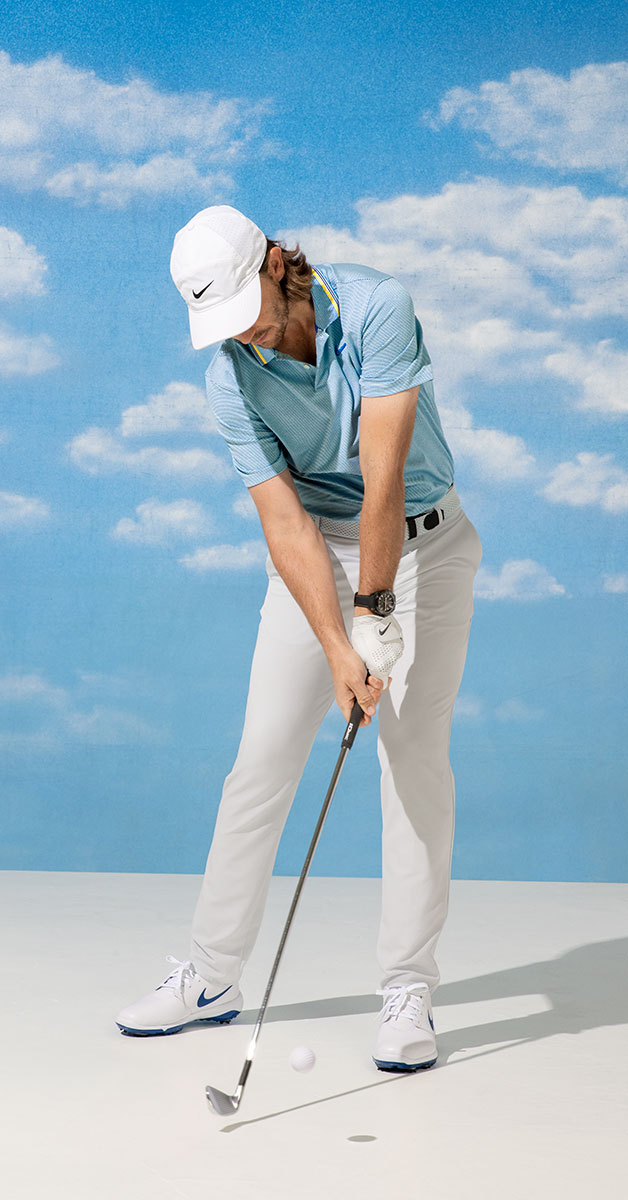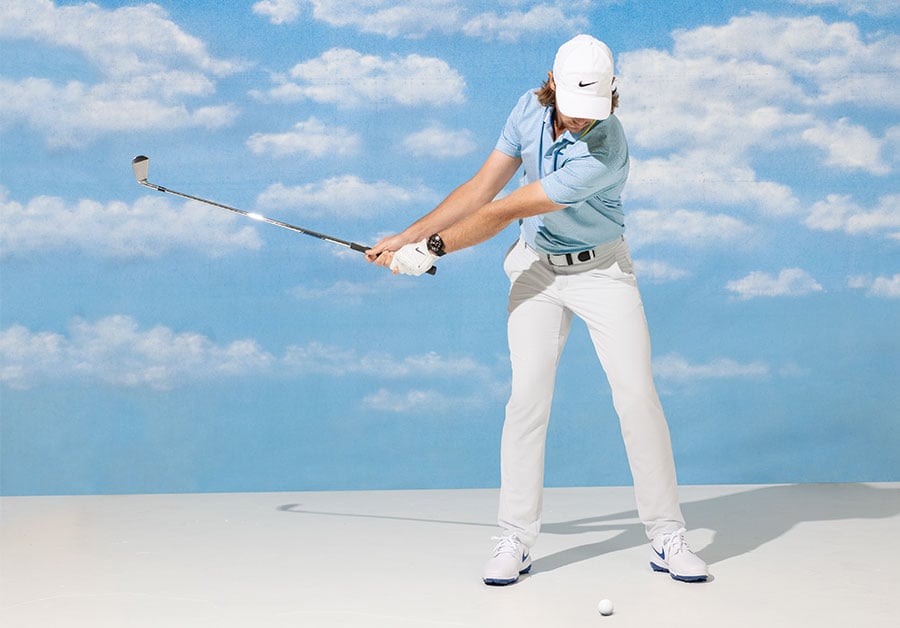Most golfers, amateur and pro, have a stock shot – a ball flight and trajectory they’re used to producing. It’s the one they rely on most. For example, I like a baby draw, seeing the ball start right of the target and curve back towards it. Without that shot, I’m nothing. That being said, you can’t get through most rounds hitting only one type of iron shot – especially when it’s windy. You need a variety to deal with various course conditions and hole locations. Golf Digest asked me what four I’d recommend as the most valuable for everyday golfers; the must-have shots. Selfishly, I picked my baby draw as one of them. Why? I haven’t seen too many draws that weren’t hit flush. When you need to get it to the hole, you could do worse. The other three I like are a three-quarter swing for control, a low spinner that checks up by the hole, and finally a high-trajectory shot. That’s the one you’ll probably use the least, but it’s great for holding firm greens and getting out of tree trouble. I will teach you the keys to hitting all four. If you can get confident with them, you’ll be able to get to more pins than you can with only one go-to shot. Let’s get started!
1. The Baby Draw
Play it back and drop your hands
Swinging into the ball from inside the target line comes naturally for me, but I know drawing it isn’t always easy. One reason is that many of you look at the course through a fader’s eyes. If you can’t visualise a draw shot shape, it’s going to be hard to hit one. Seeing the shape tends to make you unconsciously change your setup and swing to get the curve you want. That’s an easy swing change, right? OK, I know it’s not that easy.


So here’s more help: first, play the ball back in your stance – no farther forward than centred between your feet. Then, as you reach the top of the backswing, feel like your hands drop before the club moves towards the ball [top]. Combined with the ball position, this drop allows you to slot the club inside the target line and hit the ball on a path that’s moving outward. If the club is slightly closed in relation to that path at impact, the ball’s going to curve just the way you want it. See how my right arm is higher than my left in the follow-through [above]? That’s a good swing thought to get the clubface to close as you strike the ball.
2. The Three-Quarter Shot
Shorten the swing, but stay smooth
Normally I swing irons with about 90 percent of my maximum effort, but there are many times when I back off even further, sacrificing a little distance for better control of the ball. You’re going to want a shot like this when you’re inside 150 yards.
Most people call this a three-quarter swing, but I think of it as my “hands-to-shoulder shot”. I take the club back until my hands are about the same height as my right shoulder [below top]. Then I swing down smoothly. The key is to be unhurried. You can’t whip the club back, and you certainly shouldn’t rush it down into the ball. Rhythm is so important to execute this shot because your timing is a little different than it is when you make a full swing.


Another key? You’ve got to keep your chest down as the club strikes the ball and continues into the turf [above]. That’s so important because you need to compress the ball to get all the yardage you can out of this shorter swing. I grip down on the handle on every shot, but you should certainly do it for a three-quarter swing. It will give you better control. Just use one club longer than normal and focus on two things: take the club back until your hands are shoulder high, then swing down as smoothly as you can.
3. The Moon Ball
Play it forward and swing shallower
Trying to raise the trajectory of an iron shot can be tricky for everyday players, because the natural tendency is to try to help the ball up with a wristy swing. But that’s not the way to hit this shot. The first thing is to address the ball a little farther forward. Play it halfway between the centre of your stance and your front foot – but not any farther, or you risk thinning it.
Next, you have to make a swing that feels more like you’re sweeping the ball off the turf; not hitting sharply down on it. A shallower angle into the ball lets you preserve much of the clubface’s loft to raise the shot’s trajectory. Don’t get me wrong, you still want to compress the ball with that same chest-down sensation of the three-quarter shot; just feel like your clubhead chases along the turf a little longer after the ball is gone.


Here are two more tricks. Address the ball and then look down-target as high as you can [above top]. Your body will subconsciously adjust to get in a better setup for a higher shot (more spine tilt). And when you swing, finish high [above bottom]. To get in this pose, your body will intuitively change your swing to create that shallower pass.
4. The Low Checker
Quiet your wrists and commit to the hit
A staple of any tour-pro’s repertoire is a low-flying iron shot that checks up near the hole. You might think it requires too much skill for you to pull off, but it’s not as hard as it might look.
First, know that this is a good shot only for shorter approaches. Also, there has to be some fairway or green between you and the hole, because the ball will take a few big bounces before the spin stops it. You also need to use a club longer than normal to bring the shot down. Which club? It takes some experimentation, but I know guys who will use a pitching wedge or 9-iron from 80 yards out and get it to check.

The swing you need to make is fairly simple. Play the ball roughly centre in your stance, and make a wider backswing with very little wrist action [above top]. Then swing down and through using your body pivot to hit the shot. Again, keep your hands quiet.
The one thing you need to do is commit. If you stop your swing short in fear of hitting it too far, the ball will come off low and hot. Smoothly accelerate through the ball, and watch it fly like a bullet and hunt down the flag.
See here for more instruction from Tommy Fleetwood and Australian Golf Digest.
Tommy Fleetwood spoke with Ron Kaspriske.

